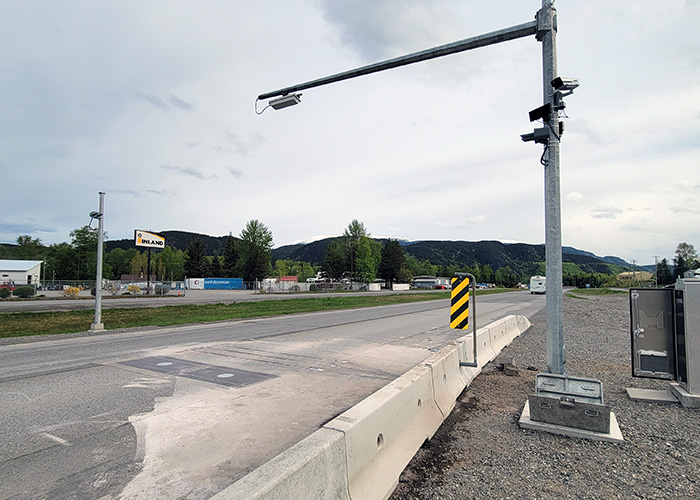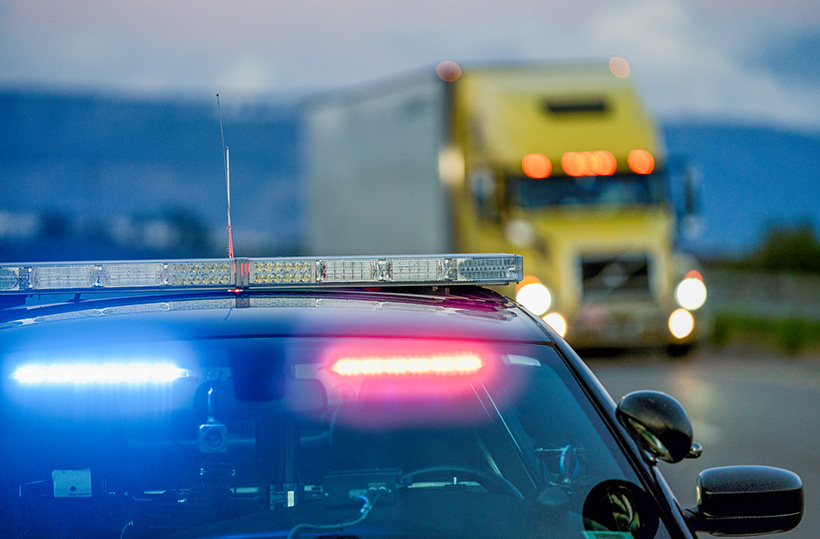Effective enforcement and compliance programs catch very few offenders. Here’s why…
The goal is compliance and safety - not enforcement
The principal aim of a successful enforcement program is to not catch offenders.
This is apparently contradictory but nevertheless true. Despite perceptions among some sections of the traveling public and the mainstream media, revenue-raising is not the primary aim of enforcement. The aim is compliance — and improved road safety.
Time and again, case studies have shown that the introduction of commercial vehicle enforcement technology, or what could be better-termed compliance technology, has had a positive influence on operator and fleet safety standards. Over time, this is evidenced by a fall-off in the number of citations. Drivers and fleet owners/operators come to understand that not complying is simply not worth it.
Not all failures to meet regulations are due to criminality or willful dismissal of what should be done. Often, it is the result of lax behavior which needs to be rectified — time taken to ensure that a vehicle is safe to use is not time wasted, or time better spent doing other things.
Technology improves compliance
The suite of technologies now available can improve compliance across a wider geographic area, as well as flag an increasing range of infringements and safety hazards.
Virtual Weigh-In-Motion (VWIM), for instance, dramatically increases the distances at which pre-screening can be successfully and consistently carried out, extending the efficiencies and capabilities of enforcement officials, whose numbers and availability can often be limited. VWIM can also be used to counter a long-standing problem associated with weight enforcement — avoidance of inspection by choosing alternates to primary and preferred routes.
The result is weight-compliant vehicles constrained to those routes and road structures designed to carry them, and far less damage to secondary and tertiary roads by large, illegally operating vehicles.
Virtual Weigh Stations – An integrated safety solution
IRD’s Virtual Weigh Station (VWS) systems combine VWIM with other technologies to deliver even more vehicle safety information to enforcement personnel without requiring stops for inspection.
For instance, over-dimension vehicles are a major safety concern for many agencies. They can damage bridges, cause accidents and disrupt traffic flow. Over-height, over-width, and over-length detection using vehicle dimensioning technology is an effective way to reduce bridge strikes by those vehicles.

A VWS equipped with WIM sensors, over-height detection, and TACS
A virtual weigh station that incorporates vehicle dimensioning improves road safety and helps prevent costly damage to bridges, vehicles, and their drivers. Enforcement agencies can monitor for vehicles that pose a risk so those vehicles can be stopped before they do any damage.
Countering safety risks posed by poor truck maintenance
Overweight vehicles over-stress their powertrains and braking systems thereby resulting in increased emissions and safety implications for themselves and the general public. Stopping distances, even with correctly maintained wheels and brakes, can be significantly increased. With poorly maintained wheels and brakes, the stopping distances and risks can be far greater.
This led us to develop another technology that may be integrated with the VWS to improve transportation safety, the Tire Anomaly and Classification System (TACS™).
TACS screens commercial vehicles at weigh station facilities to identify those vehicles which are unsafe due to missing or under-inflated tires. It also supports the real-time screening of commercial vehicles at highway speeds of up to 100 mph (or 160 kph). The technology identifies flat, missing, or mismatched diameter tires on a dual tire set — all potentially significant safety problems.
Primary and secondary safety risks
Notably, TACS helps to address both primary and secondary safety risks.
For instance, the enforcement team at the Cordelia Commercial Vehicle Enforcement Facility, which is operated by the California Highway Patrol (CHP), has noticed a significant uplift in tire maintenance compliance since implementing TACS. From an initial situation of declaring vehicles out-of-service practically “all day long”, CHP has seen a major and positive change in driver/operator diligence.
CHP has also perceived a notable reduction in reports of in-lane debris — specifically tread from commercial vehicle tires which have disintegrated.
In-lane debris can cause significant damage to smaller vehicles and for motorcyclists, an encounter can be fatal. This is especially true if a tire that has disintegrated/delaminated has done so in a way that causes larger pieces to be left behind.
Then there is the hazard faced by operatives having to clear debris from live lanes; while effective traffic management routines can reduce the safety risk, some level of risk certainly remains and there is an inevitable reduction in lane capacity and a corresponding increase in congestion while the road is cleaned up.
There are, then, both safety and economic effects beyond those which affect the vehicle operators themselves.
Engagement with operators
A large part of gaining compliance is engaging with commercial vehicle operators and sharing with them that the use of vehicle monitoring and inspection is not necessarily punitive — it can be, for persistent offenders, but that is not the primary aim. The main aim is safety, which also eventually affects profitability for the trucking and transportation industry. In an industry such as trucking, which has notoriously tight margins, the loss of a tire can wipe out the money earned from a trip. Maintenance shouldn’t just be seen as an ‘expense’ but as a prudent investment in remaining profitable. Appropriate regulation establishes the baseline for the industry so that the standards applied to operators are universal.
Over time, an effective enforcement/compliance program spreads this knowledge across the commercial vehicle industry as a whole. The result is fewer offenders, fewer citations, and better safety and economic performance. At IRD, we see this progress as key to furthering the company’s purpose and furthering our journey towards a safer, greener world.



